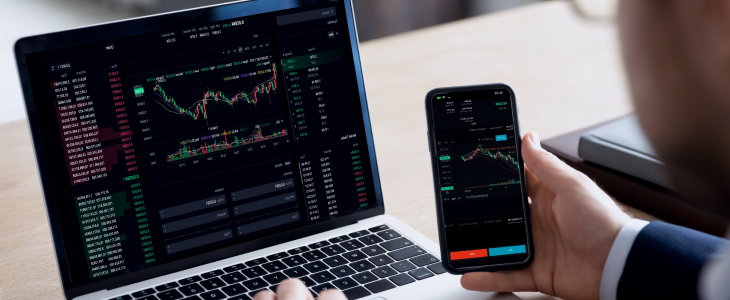The Ultimate Guide to Forex Trading Sessions 1818488454

Understanding the intricacies of forex trading sessions Trading Broker AR is crucial for traders who want to maximize their trading strategies. The Forex market is unique, functioning 24 hours a day due to its global nature, which is made possible by various trading sessions that correspond with major financial centers around the world. Each session has its characteristics, impacts market volatility, and presents unique trading opportunities.
What are Forex Trading Sessions?
Forex trading sessions are defined periods during the day when the Forex markets are open and operational in various geographical locations. Major financial hubs, such as London, New York, Sydney, and Tokyo, serve as the backbone of these sessions. Each session has its own characteristics regarding volatility, liquidity, and confirmed trading activity.
The Four Major Forex Trading Sessions
1. Sydney Session
The Sydney session is the first major trading session to open each day. It begins at 10 PM GMT and closes at 7 AM GMT. Although it has relatively low trading volume compared to other sessions, it is particularly significant for trading pairs that involve the Australian dollar (AUD) and New Zealand dollar (NZD). Market participants often experience lower volatility and can take advantage of specific events, such as economic announcements from Australia.
2. Tokyo Session
It starts at 12 AM GMT and runs until 9 AM GMT, following the Sydney session. The Tokyo session contributes to increased volatility and liquidity, especially concerning the Japanese yen (JPY). It overlaps with the Sydney session, which can lead to heightened trading activity. Traders often capitalize on currency pairs that include the Australian, New Zealand, and Japanese currencies during this period.
3. London Session
The London session, commencing at 8 AM GMT and wrapping up at 5 PM GMT, is one of the most influential sessions in the Forex market. It overlaps with both the Sydney and Tokyo sessions, leading to increased trading volume. Approximately 34% of all Forex trades occur during this session, making it a critical time for traders. Major pairs, especially those involving the Euro (EUR) and British pound (GBP), exhibit high levels of volatility during this session primarily due to the multitude of economic data releases and market activities that occur in Europe.
4. New York Session
Beginning at 1 PM GMT and ending at 10 PM GMT, the New York session is vital for trading the U.S. dollar (USD) since it is the largest Forex market in the world. It overlaps significantly with the London session, creating the most active trading hours during the day. Key economic reports from the US, such as employment data and GDP figures, are released during this session, which can generate substantial volatility in currency pairs involving the USD.
Session Overlaps and Their Impact
One of the most significant aspects of Forex trading sessions is their overlaps. The two main overlaps occur between the Sydney and Tokyo sessions and between the London and New York sessions.

The Sydney and Tokyo overlap occurs briefly but can offer some trading opportunities, particularly for pairs that include the AUD and JPY. However, the London and New York overlap is considerably more significant, providing increased volatility and opportunities across all major currency pairs. Traders tend to be most active during these overlap periods, which can lead to rapid price movements and heightened trading volumes.
Best Times to Trade
While Forex operates 24 hours a day, the best times to trade depend on the trader's strategy and the currency pairs they want to engage with. Generally, the overlap periods between sessions yield the best opportunities for new trades and significant price movements:
- **London Session (8 AM - 5 PM GMT)**: Ideal for trading most major pairs due to high liquidity.
- **New York Session (1 PM - 10 PM GMT)**: Excellent for U.S. dollar pairs and high volatility.
- **Tokyo Session (12 AM - 9 AM GMT)**: Provides opportunities for trading pairs with JPY and AUD.
Factors Affecting Market Dynamics During Each Session
Various factors influence trading sessions, and understanding them can help traders make informed decisions:
1. Economic News Releases
Economic indicators play a necessary role in shaping market sentiment. Traders should be aware of scheduled economic news releases, as they can significantly affect price action. For instance, high-impact news disproportionately affects the sessions where they are released, typically resulting in spikes in volatility.
2. Market Sentiment
Global market sentiment can shift dramatically during different trading sessions, influenced by factors such as geopolitical events or changes in commodity prices. Understanding the macroeconomic climate can help traders strategize their moves ahead of major sessions.
3. Regional Trading Styles
Each session exhibits distinct trading styles influenced by regional traders' preferences, which can affect price movement. For instance, European traders might focus on EUR and GBP pairs, while Asian traders may favor JPY pairs. This cultural influence ripples through trading behavior and market movements at different times of day.
Conclusion
Successful Forex trading requires a solid understanding of the different trading sessions, their unique characteristics, and impact on market dynamics. Traders should strategically plan their activities around these sessions to harness the best opportunities for profit. Utilizing economic calendars and following global news keep traders in sync with market movements and help formulate effective trading strategies.
By adapting trading strategies to align with the unique characteristics and opportunities presented during each trading session, traders can enhance their chances of success in the Forex market. Ultimately, it comes down to continuous learning, practice, and experience in understanding and responding to market trends and trading conditions.

